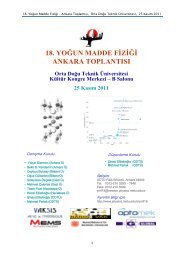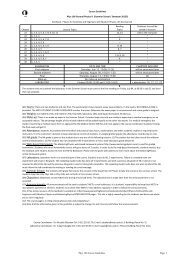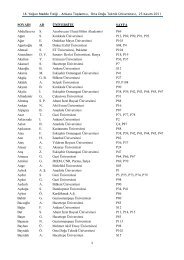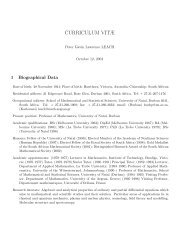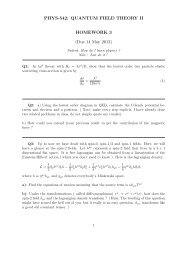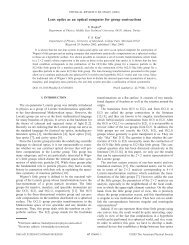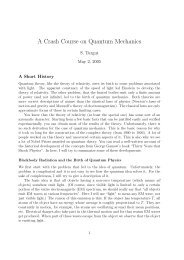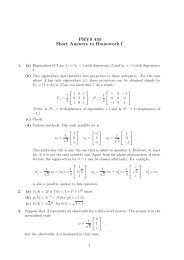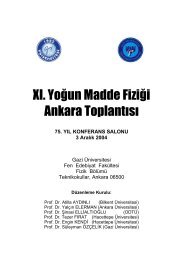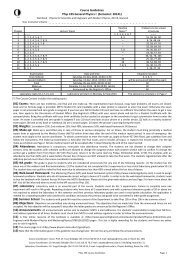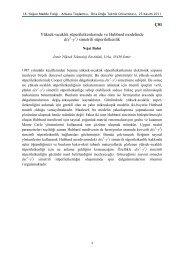SExtractor Draft - METU Astrophysics
SExtractor Draft - METU Astrophysics
SExtractor Draft - METU Astrophysics
- No tags were found...
You also want an ePaper? Increase the reach of your titles
YUMPU automatically turns print PDFs into web optimized ePapers that Google loves.
279.1.3 Position of the peak: XPEAK, YPEAKIt is sometimes useful to have the position XPEAK,YPEAK of the pixel with maximum intensityin a detected object, for instance when working with likelihood maps, or when searching forartifacts. For better robustness, PEAK coordinates are computed on filtered profiles if available.On symetrical profiles, PEAK positions and barycenters coincide within a fraction of pixel (XPEAKand YPEAK coordinates are quantized by steps of 1 pixel, thus XPEAK IMAGE and YPEAK IMAGEare integers). This is no longer true for skewed profiles, therefore a simple comparison betweenPEAK and barycenter coordinates can be used to identify asymetrical objects on well-sampledimages.9.1.4 2nd order moments: X2, Y2, XY(Centered) second-order moments are convenient for measuring the spatial spread of a sourceprofile. In <strong>SExtractor</strong> they are computed with:∑I i xi2X2 = x 2 =Y2 = y 2 =XY = xy =i∈S∑i∈S∑i∈S∑i∈S∑I i− x 2 , (15)I i y 2 ii∈S∑i∈SI i− y 2 , (16)I i x i y iI i− x y, (17)These expressions are more subject to roundoff errors than if the 1st-order moments were subtractedbefore summing, but allow both 1st and 2nd order moments to be computed in one pass.Roundoff errors are however kept to a negligible value by measuring all positions relative hereagain to XMIN and YMIN.9.1.5 Basic shape parameters: A, B, THETAThese parameters are intended to describe the detected object as an elliptical shape. A andB are its semi-major and semi-minor axis lengths, respectively. More precisely, they representthe maximum and minimum spatial rms of the object profile along any direction. THETA is theposition-angle between the A axis and the NAXIS1 image axis. It is counted counter-clockwise.Here is how they are computed:2nd-order moments can easily be expressed in a referential rotated from the x, y image coordinatesystem by an angle +θ:x 2 θ= cos 2 θ x 2 + sin 2 θ y 2 − 2 cos θ sin θ xy,yθ 2 = sin 2 θ x 2 + cos 2 θ y 2 + 2 cos θ sin θ xy,xy θ = cos θ sin θ x 2 − cos θ sin θ y 2 + (cos 2 θ − sin 2 θ) xy.One can find interesting angles θ 0 for which the variance is minimized (or maximized) along x θ :∂x 2 θ= 0, (19)∂θ ∣θ0(18)



